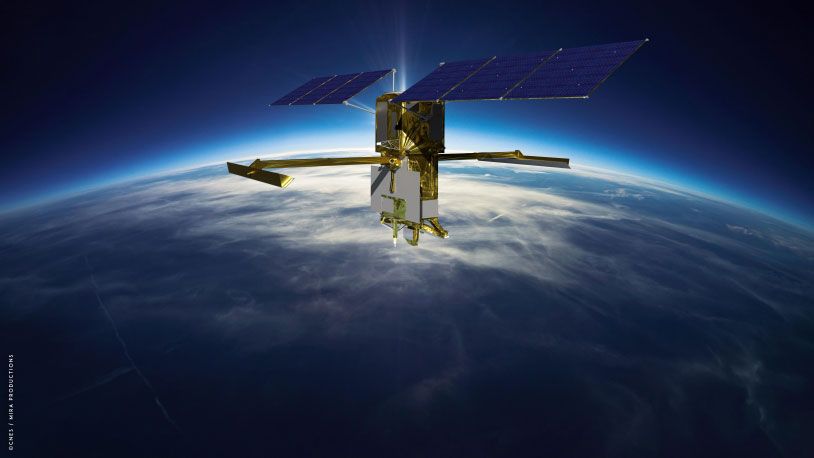
Frequency coordination for satellite radio services in S, X and Ka bands


Jean Pla, Expert in frequency management, Centre National d’Etudes Spatiales (CNES), France
Satellite coordination is an essential part of frequency management that all satellite operators, under the auspices of their respective administrations, should perform to ensure interference-free operations.
Scientific organizations such as space and meteorological agencies, as well as telecom operators and now new space operators, use the satellite scientific bands in the S, X and Ka radio-frequency ranges. They are used essentially for telemetry and telecommand purposes.
Satellite frequency coordination, particularly in these frequency bands, relies on a global regulatory and technical framework maintained by the International Telecommunication Union (ITU), the United Nations agency for information and communication technologies.
What is satellite coordination and when is it necessary?
Satellite coordination is a bilateral and multilateral process aimed at conducting interference-free operation of the existing and planned satellite systems of ITU Member State administrations. In addition, mandatory or non-mandatory coordination processes allow future recognition of new stations or systems.
Mandatory coordination is applicable for satellite networks using geostationary-satellite orbits, satellite systems in the fixed-satellite and the broadcasting-satellite service, and for stations for which the requirement to coordinate is included in a footnote to the Table of Frequency Allocations (Radio Regulations, Article 5).
Other non-geostationary-satellite networks — including all pertinent services and certain frequency bands — are subject to non-mandatory coordination and only require advance publication before notification and the recording of frequency assignments.
How coordination is conducted
Satellite coordination should be understood as a process to avoid potential harmful interference between new and existing wireless systems, stations, or applications.
It involves the following steps:
- The exchange of technical and operational data on existing, previously submitted, or new frequency assignments for radio stations or systems.
- Studies of potential interference effects between existing and new frequency assignments.
- Correspondence between national or international spectrum management authorities and spectrum users.
- Consideration, when technical works are conducted, of the appropriate ITU radiocommunication standards — known as ITU–R Recommendations — defining protection criteria.
WRC‑23 agenda item 9.2
The Report of the Conference Preparatory Meeting of the upcoming World Radiocommunication Conference, WRC‑23, gives important instructions for administrations when drafting an advanced publication information in the S band (in fact 2025–2110 megahertz (MHz) and 2200–2290 MHz). This will be an issue to be addressed at the next radiocommunication conference.
An increasing number of submissions for advance publication information in the International Frequency Circular (BR IFIC), as required under Radio Regulations Article 9, No. 9.1, contain generic information. In particular, an unhealthy tendency has arisen for submissions to book the whole space operation bands covering 2025–2110 MHz and 2200–2290 MHz, or major parts of the S band. Some submissions have even declared the whole Earth surface as a service area and mentioned no specific earth stations — only “typical” ones.
Such a lack of specific information makes the cooperation process under Article 9 (Nos. 9.3 and 9.4) longer and more complicated. Faced with such generic information, administrations can either make equally generic comments or request more detailed information from the notifying administration. The ITU Radiocommunication Bureau cannot reject filings with large frequency ranges, as long as the filing complies with the Radio Regulations.
Practical approach in the S band
The S band requires specific care since it is widely used by many operators. The ITU Radiocommunication Sector (ITU–R) and the less formal Space Frequency Coordination Group (SFCG) have approved recommendations and resolutions to help operators and administrations with advance publication, in addition to the ITU–R Recommendations for performing calculations.
ITU Constitution and Radio Regulations
According to Article 1 of the ITU Constitution, one of the organization’s responsibilities is to “coordinate efforts to eliminate harmful interference between radio stations of different countries and to improve the use made of the radio-frequency spectrum for radiocommunication services and of the geostationary-satellite and other satellite orbits”.
Article 44 of the Constitution adds: “In using frequency bands for radio services, Member States shall bear in mind that radio frequencies and any associated orbits, including the geostationary-satellite orbit, are limited natural resources and… must be used rationally, efficiently and economically, in conformity with the provisions of the Radio Regulations”.
ITU Member State administrations and satellite operators are bound by the ITU Radio Regulations, the sole globally-binding treaty governing the use of the radio-frequency spectrum and satellite orbits. Article 9 of the treaty contains the requirements and processes to obtain agreement, through satellite coordination between operators, prior to the notification process for a satellite network, while Article 11 outlines the conditions for which such notification is required.
The outcome of a satellite coordination meeting is subject to approval by ITU Member State administrations, and any satellite coordination is framed by the regulatory and technical principles outlined above.
Due to continuous high usage, regulatory attention is increasingly focused on preserving the S band.
The case of the X band, which is used for high data-rate transmission, is specific since it usually requires technical calculations to facilitate coexistence between satellite networks using the same frequency bands.
In the future, the Ka band will be widely used for very high data-rate Earth-observation satellites.
Download your copy of the ITU News Magazine: Science services.
Header image credit: CNES
